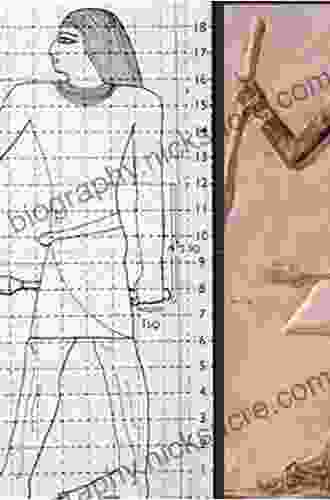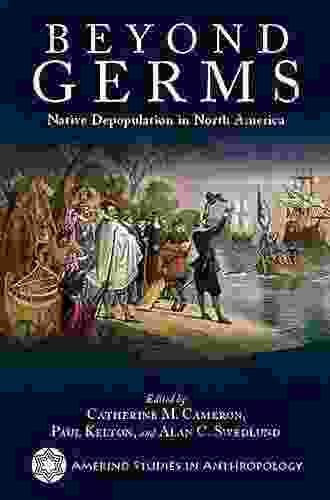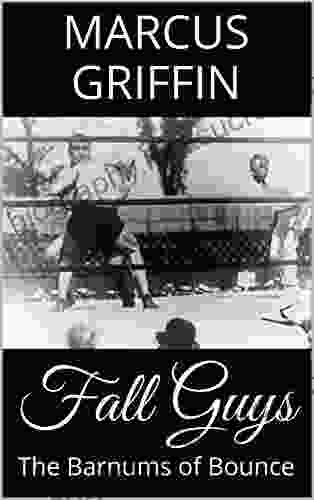Proportion And Style In Ancient Egyptian Art

## Proportion and Style in Ancient Egyptian Art
Ancient Egyptian art is renowned for its distinctive style and adherence to strict proportions, reflecting the Egyptians' belief in order, harmony, and the divine. This article explores the fundamental principles governing the proportion and style of Egyptian art, showcasing its unique characteristics and influences.
4 out of 5
| Language | : | English |
| File size | : | 39148 KB |
| Text-to-Speech | : | Enabled |
| Screen Reader | : | Supported |
| Enhanced typesetting | : | Enabled |
| Print length | : | 470 pages |
| Lending | : | Enabled |
### Canonical Proportions: A Divine Formula
Egyptian artists employed a complex system of canonical proportions based on the human figure, ensuring consistency and aesthetic balance in their creations. The "canon of proportions" was a set of guidelines that determined the ideal proportions of various body parts, ensuring that each figure depicted in art adhered to these established norms.
The basic unit of measurement in Egyptian art was the "fist," which represented the width of a closed fist at the knuckles. Multiple fists were used to determine the proportions of the human body, with specific ratios assigned to various body parts. For instance, the height of a standing male figure was typically eight fists, while the height of a seated figure was six fists. Similarly, the length of an arm was typically three fists, and the length of a leg was four fists.
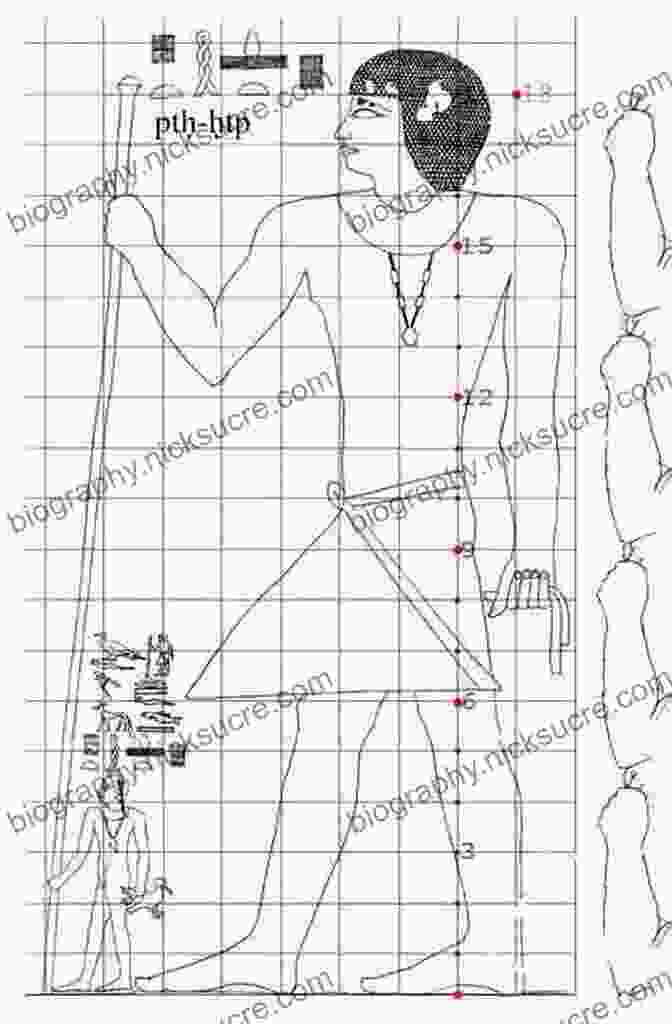
### Frontal and Profile Views: A Unified Perspective
One of the distinctive features of Egyptian art is the use of both frontal and profile views in the depiction of human figures. This unique approach allowed artists to capture multiple perspectives simultaneously, creating a sense of depth and completeness.
The head was typically depicted in profile, showcasing the distinctive facial features of the subject. The body, however, was depicted frontally, revealing the shoulders, chest, and limbs. This combination of perspectives provided a comprehensive representation of the figure, highlighting both its physical attributes and its emotional state.

### Flat Surfaces and Linear Outlines: Capturing Eternity
Egyptian art is characterized by its flat surfaces and linear outlines, a technique that contributed to its timeless and iconic style. Figures were depicted as two-dimensional, with minimal shading or perspective. This approach emphasized the essential forms and shapes of the subjects, creating a sense of permanence and durability.
The use of flat surfaces allowed for a clear and precise delineation of details. Lines were drawn with great precision, creating crisp and sharp edges. This technique imbued Egyptian art with a sense of orderliness and clarity, reflecting the Egyptians' desire for precision and control in their artistic endeavors.
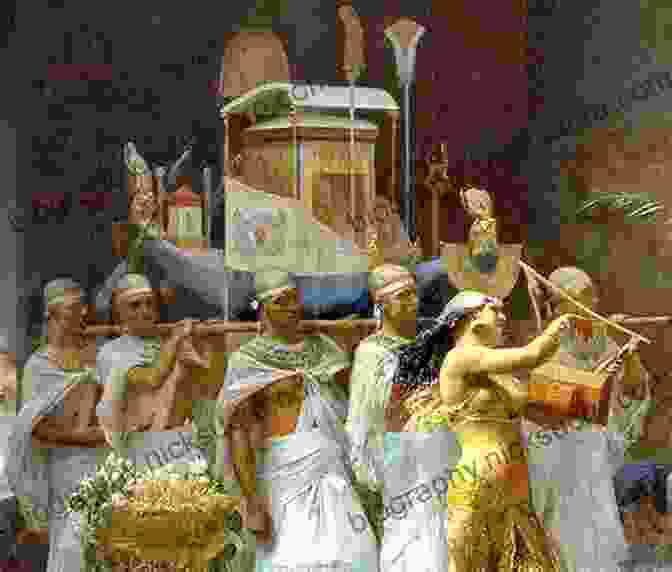
### Symbolism and Religious Significance: Beyond Aesthetics
Proportion and style in Egyptian art were not merely aesthetic considerations; they also carried deep symbolic and religious significance. The adherence to canonical proportions represented the Egyptians' belief in the divine order of the universe. By following these established guidelines, artists sought to create images that reflected the harmony and perfection of the cosmos.
Additionally, certain proportions were associated with specific deities and divine attributes. For instance, the god Horus was often depicted with a falcon head and a human body, symbolizing his dual nature as both a celestial and earthly power. The goddess Isis was depicted with a slender and elegant form, representing her association with grace and fertility.
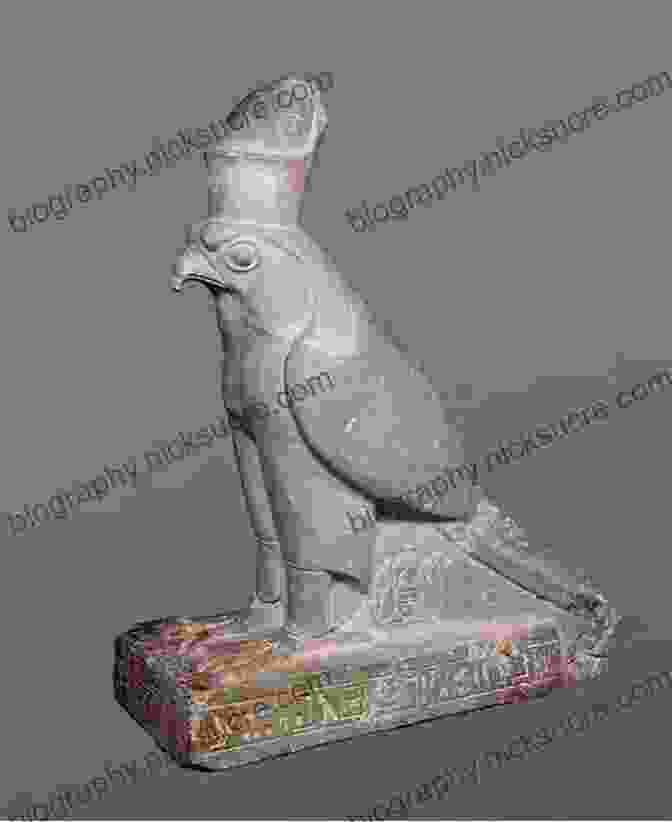
### Influences and Legacy: Enduring Principles
The proportion and style of ancient Egyptian art had a profound influence on subsequent artistic traditions, both within Egypt and beyond its borders. The use of canonical proportions became a standard in later Egyptian art, including the Coptic and Byzantine periods.
Furthermore, Egyptian art's emphasis on flat surfaces and linear outlines influenced the development of Western art, particularly in the early Renaissance period. Artists such as Giotto and Cimabue employed similar techniques to create a sense of order and clarity in their paintings.

### : Timeless Harmony
The proportion and style of ancient Egyptian art reflect a profound understanding of aesthetics, geometry, and symbolism. By adhering to canonical proportions and employing a unique combination of frontal and profile views, flat surfaces, and linear outlines, Egyptian artists created timeless images that transcended mere decoration and served a sacred and didactic purpose.
The enduring influence of Egyptian art on subsequent artistic traditions is a testament to its enduring appeal and the enduring principles of order, harmony, and beauty that it embodies. The study of Egyptian art continues to inspire and inform artists and art historians alike, offering a glimpse into the timeless creativity and spiritual beliefs of one of the world's most ancient and enigmatic civilizations.
4 out of 5
| Language | : | English |
| File size | : | 39148 KB |
| Text-to-Speech | : | Enabled |
| Screen Reader | : | Supported |
| Enhanced typesetting | : | Enabled |
| Print length | : | 470 pages |
| Lending | : | Enabled |
Do you want to contribute by writing guest posts on this blog?
Please contact us and send us a resume of previous articles that you have written.
 Fiction
Fiction Non Fiction
Non Fiction Romance
Romance Mystery
Mystery Thriller
Thriller SciFi
SciFi Fantasy
Fantasy Horror
Horror Biography
Biography Selfhelp
Selfhelp Business
Business History
History Classics
Classics Poetry
Poetry Childrens
Childrens Young Adult
Young Adult Educational
Educational Cooking
Cooking Travel
Travel Lifestyle
Lifestyle Spirituality
Spirituality Health
Health Fitness
Fitness Technology
Technology Science
Science Arts
Arts Crafts
Crafts DIY
DIY Gardening
Gardening Petcare
Petcare Grey Owl
Grey Owl C R Hallpike
C R Hallpike Michelle Rigler
Michelle Rigler Marc Loy
Marc Loy S E Hinton
S E Hinton Ralph Galeano
Ralph Galeano Blair Braverman
Blair Braverman Diane Cardwell
Diane Cardwell Samantha Fitts
Samantha Fitts Bagele Chilisa
Bagele Chilisa Catherine J Allen
Catherine J Allen Tami Anastasia
Tami Anastasia Barbara Russell
Barbara Russell V B Alekseev
V B Alekseev Barry Rabkin
Barry Rabkin Mark Rashid
Mark Rashid Sam Nadler
Sam Nadler Rebecca Solnit
Rebecca Solnit Eric Engle
Eric Engle Jim Wharton
Jim Wharton Emily Chappell
Emily Chappell Christine Kenneally
Christine Kenneally Baruch Englard
Baruch Englard Roanne Van Voorst
Roanne Van Voorst Nicholas Sparks
Nicholas Sparks Rebecca Rupp
Rebecca Rupp Rob Pope
Rob Pope Max Marchi
Max Marchi Barbara Neiman
Barbara Neiman James C Radcliffe
James C Radcliffe Barbara Rogoff
Barbara Rogoff Gary Lincoff
Gary Lincoff Brian Gilbert
Brian Gilbert James Duggan
James Duggan Guy P Harrison
Guy P Harrison Arny Alberts
Arny Alberts Christopher Taylor Ma Lmft
Christopher Taylor Ma Lmft Jill Brown
Jill Brown William H Frey
William H Frey Graham Farmelo
Graham Farmelo Tori Day
Tori Day Violet Moller
Violet Moller Mykel Hawke
Mykel Hawke Kenneth Wilgus Phd
Kenneth Wilgus Phd Peter Wacht
Peter Wacht Robin Nixon
Robin Nixon Hunbatz Men
Hunbatz Men Jane Hardwicke Collings
Jane Hardwicke Collings Donald R Gallo
Donald R Gallo Barry Burd
Barry Burd Holger Schutkowski
Holger Schutkowski Brandon Royal
Brandon Royal Boy Scouts Of America
Boy Scouts Of America S K Gupta
S K Gupta Sergei Urban
Sergei Urban Shannon Reilly
Shannon Reilly Farley Mowat
Farley Mowat Ryan A Pedigo
Ryan A Pedigo Dan Golding
Dan Golding Daniel S Lobel Phd
Daniel S Lobel Phd Jessica Smartt
Jessica Smartt Rachel Dash
Rachel Dash David Burch
David Burch Anthony Edwards
Anthony Edwards Mark Young
Mark Young Rachel Smith
Rachel Smith James Kilgo
James Kilgo Edwin R Sherman
Edwin R Sherman Shmuel Peerless
Shmuel Peerless Mary A Fristad
Mary A Fristad Randy Baker
Randy Baker Jenna Helland
Jenna Helland Laura Pavlov
Laura Pavlov Martin Dugard
Martin Dugard Mike High
Mike High Edward Lee
Edward Lee Paul Doiron
Paul Doiron Nina Manning
Nina Manning Dave Karczynski
Dave Karczynski Oliver T Spedding
Oliver T Spedding Editors Of Southern Living Magazine
Editors Of Southern Living Magazine Leonard M Adkins
Leonard M Adkins James Randi
James Randi David Klausmeyer
David Klausmeyer Meghan L Marsac
Meghan L Marsac Kara Tippetts
Kara Tippetts Temple West
Temple West Barry Rhodes
Barry Rhodes Deanna Roy
Deanna Roy Barzin Pakandam
Barzin Pakandam Luke Gilkerson
Luke Gilkerson Mike Loades
Mike Loades Charlie Shamp
Charlie Shamp Smart Reads
Smart Reads Cynthia Levinson
Cynthia Levinson Elliott Vandruff
Elliott Vandruff Noah Brown
Noah Brown Lew Freedman
Lew Freedman Prince Asare
Prince Asare Sampson Davis
Sampson Davis Mike Swedenberg
Mike Swedenberg Jenny Chandler
Jenny Chandler Carlo Collodi
Carlo Collodi James Duthie
James Duthie Hongyu Guo
Hongyu Guo Craig Lambert
Craig Lambert Shayla Black
Shayla Black Steve Biddulph
Steve Biddulph Ping Li
Ping Li Gabriyell Sarom
Gabriyell Sarom Laura Ingalls Wilder
Laura Ingalls Wilder St Louis Post Dispatch
St Louis Post Dispatch Buddy Levy
Buddy Levy Siddhartha Rao
Siddhartha Rao Stephanie Fritz
Stephanie Fritz Mick Conefrey
Mick Conefrey Jean Smith
Jean Smith Dustin Salomon
Dustin Salomon John D Barrow
John D Barrow Kate Darling
Kate Darling Gay Robins
Gay Robins Nick Townsend
Nick Townsend Gordon Witteveen
Gordon Witteveen Thomas Lumley
Thomas Lumley Otto Scharmer
Otto Scharmer Martin Sternstein
Martin Sternstein Fred Mitchell
Fred Mitchell Margaret Owen
Margaret Owen Ray Comfort
Ray Comfort David Beaupre
David Beaupre Bill Milliken
Bill Milliken J Michael Veron
J Michael Veron Rob Rains
Rob Rains Thomas Bulfinch
Thomas Bulfinch Sam Cowen
Sam Cowen Richard Scott
Richard Scott Susan Nance
Susan Nance Mark Mayfield
Mark Mayfield Allan V Horwitz
Allan V Horwitz Yuval Noah Harari
Yuval Noah Harari Mike Allison
Mike Allison Kara Goucher
Kara Goucher Linda Carroll
Linda Carroll Barbara Taylor
Barbara Taylor Bridget Flynn Walker Phd
Bridget Flynn Walker Phd Ben Sedley
Ben Sedley Charles River Editors
Charles River Editors Ryan Higa
Ryan Higa Richard Harris
Richard Harris Janna Levin
Janna Levin Vanessa Ogden Moss
Vanessa Ogden Moss Constanze Niedermaier
Constanze Niedermaier Scott Reed
Scott Reed Eric Franklin
Eric Franklin Matt Taddy
Matt Taddy Erica Schultz
Erica Schultz Lawrence Baldassaro
Lawrence Baldassaro Ryan T White
Ryan T White Joseph Schmuller
Joseph Schmuller Toby A H Wilkinson
Toby A H Wilkinson Nichole Carpenter
Nichole Carpenter Bruce Pascoe
Bruce Pascoe Mark Kurlansky
Mark Kurlansky Frederick Douglass Opie
Frederick Douglass Opie John Sandford
John Sandford Ken Xiao
Ken Xiao David A Bogart
David A Bogart Fabien Clavel
Fabien Clavel Catherine M Cameron
Catherine M Cameron Lily Collins
Lily Collins Suzanne Wylde
Suzanne Wylde Nicole Martin
Nicole Martin Stefan Ecks
Stefan Ecks Pearson Education
Pearson Education David Abram
David Abram Jonathan Kellerman
Jonathan Kellerman Ron Lemaster
Ron Lemaster Melissa Haag
Melissa Haag Brad Burns
Brad Burns Cheryl Erwin
Cheryl Erwin Chiara Sparks
Chiara Sparks Bobbie Faulkner
Bobbie Faulkner Jayanti Tambe
Jayanti Tambe James Koeper
James Koeper David Thomas
David Thomas Chase Hill
Chase Hill Dr Michael P Masters
Dr Michael P Masters Jamie Margolin
Jamie Margolin Cindy Post Senning
Cindy Post Senning Christopher L Heuertz
Christopher L Heuertz Jack Newman
Jack Newman Valerie Pollmann R
Valerie Pollmann R Debra Kilby
Debra Kilby Wayne B Chandler
Wayne B Chandler Ellen Lewin
Ellen Lewin Ellen Notbohm
Ellen Notbohm Suzanne Leonhard
Suzanne Leonhard Colleen Alexander Roberts
Colleen Alexander Roberts Philip Maffetone
Philip Maffetone Jennifer Traig
Jennifer Traig F William Lawvere
F William Lawvere Bob Holtzman
Bob Holtzman Rachelle Zukerman
Rachelle Zukerman Karen Bush
Karen Bush Burt L Standish
Burt L Standish Casey Watson
Casey Watson David Aretha
David Aretha Barbara Kennard
Barbara Kennard Rhonda Belle
Rhonda Belle Kit Yates
Kit Yates Nick Neely
Nick Neely Stanislas Dehaene
Stanislas Dehaene Benita Bensch
Benita Bensch Joshua Hammer
Joshua Hammer Cary J Griffith
Cary J Griffith Eliza Reid
Eliza Reid Peter Martin
Peter Martin Clifford Herriot
Clifford Herriot Sharon Dukett
Sharon Dukett Farzana Nayani
Farzana Nayani Daniel P Huerta
Daniel P Huerta Steven Rinella
Steven Rinella Mark Twain
Mark Twain Jake Anderson
Jake Anderson Ian Leslie
Ian Leslie W Hamilton Gibson
W Hamilton Gibson Danny Staple
Danny Staple Chris Eberhart
Chris Eberhart John Kimantas
John Kimantas Peter K Tyson
Peter K Tyson Kam Knight
Kam Knight Jim Fay
Jim Fay Timothy Pakron
Timothy Pakron Beebe Bahrami
Beebe Bahrami Mike Stanton
Mike Stanton Sam Kean
Sam Kean Joseph Alton M D
Joseph Alton M D Jennifer Estep
Jennifer Estep Barry Johnston
Barry Johnston Steve Burrows
Steve Burrows Autumn Carpenter
Autumn Carpenter Isabel Fonseca
Isabel Fonseca Breanna Hayse
Breanna Hayse Charles Buist
Charles Buist Jaymin Eve
Jaymin Eve Ronald Wheeler
Ronald Wheeler Richard Weissbourd
Richard Weissbourd Jay Abramson
Jay Abramson Harvey Wittenberg
Harvey Wittenberg Diane Musho Hamilton
Diane Musho Hamilton P J Agness
P J Agness Gerald Beaudry
Gerald Beaudry Erik J Brown
Erik J Brown Jeffrey Jensen Arnett
Jeffrey Jensen Arnett Victor Seow
Victor Seow Nadine Hays Pisani
Nadine Hays Pisani Molly E Lee
Molly E Lee Edith Grossman
Edith Grossman J C Cervantes
J C Cervantes J Bruce Brackenridge
J Bruce Brackenridge Cait Stevenson
Cait Stevenson Ernie Morton
Ernie Morton Kathleen Masters
Kathleen Masters Sam Harris
Sam Harris John Quick
John Quick Debbie M Schell
Debbie M Schell Lewis Thomas
Lewis Thomas Gordon H Chang
Gordon H Chang Kindle Edition
Kindle Edition Susan Scott
Susan Scott Monica Hesse
Monica Hesse Paul Van Lierop
Paul Van Lierop Chris Cage
Chris Cage Ben Goldacre
Ben Goldacre Chuck Missler
Chuck Missler Sport Hour
Sport Hour Michael Palin
Michael Palin Stan Tekiela
Stan Tekiela Joanna Hunt
Joanna Hunt Stephen J Bavolek
Stephen J Bavolek Beau Miles
Beau Miles Kenton Kroker
Kenton Kroker Craig Romano
Craig Romano Ron Avery
Ron Avery Helen Kara
Helen Kara Daniel T Willingham
Daniel T Willingham Thomas French
Thomas French Cara Koscinski
Cara Koscinski Marshall Jon Fisher
Marshall Jon Fisher Scarlett Thomas
Scarlett Thomas Babu The Panda
Babu The Panda Robin Knox Johnston
Robin Knox Johnston Becca Anderson
Becca Anderson Achille Rubini
Achille Rubini Linnea Dunne
Linnea Dunne William Wasserman
William Wasserman Larry Dane Brimner
Larry Dane Brimner Simon Spurrier
Simon Spurrier John Henry Phillips
John Henry Phillips Vanessa Garbin
Vanessa Garbin Monta Z Briant
Monta Z Briant Pat Shipman
Pat Shipman Lynn Mann
Lynn Mann Janis Keyser
Janis Keyser Beth Miller
Beth Miller Jennifer Pharr Davis
Jennifer Pharr Davis Jen Houcek
Jen Houcek John Lister Kaye
John Lister Kaye Basu Shanker
Basu Shanker Jeff Alt
Jeff Alt Emma Walker
Emma Walker Charlotte Browne
Charlotte Browne Sean Mcindoe
Sean Mcindoe Hill Gates
Hill Gates Scott Westerfeld
Scott Westerfeld Craig Martin
Craig Martin Hollis Lance Liebman
Hollis Lance Liebman Mina Lebitz
Mina Lebitz Dave Rearwin
Dave Rearwin Glenna Mageau
Glenna Mageau Master Gamer
Master Gamer Helen Fisher
Helen Fisher Mitch Prinstein
Mitch Prinstein Jeremy Sweet
Jeremy Sweet Vincent Bossley
Vincent Bossley Kate Williams
Kate Williams Daniel M Koretz
Daniel M Koretz Alastair Hannay
Alastair Hannay Reprint Edition Kindle Edition
Reprint Edition Kindle Edition Denton Salle
Denton Salle Ben Povlow
Ben Povlow Candice Davie
Candice Davie Geoffrey Finch
Geoffrey Finch Rob Hutchings
Rob Hutchings Mike Massie
Mike Massie Kyle Butler
Kyle Butler Mark Ellyatt
Mark Ellyatt John Whitman
John Whitman Visual Arts
Visual Arts Jessica F Shumway
Jessica F Shumway Barry Glassner
Barry Glassner Barbara Illowsk
Barbara Illowsk Mark H Newman
Mark H Newman Charlotte Booth
Charlotte Booth Tom Miller
Tom Miller Trish Kuffner
Trish Kuffner T H White
T H White Joshua G Shifrin
Joshua G Shifrin Dr Craig Malkin
Dr Craig Malkin Tim Marshall
Tim Marshall Lock Gareth
Lock Gareth John C Norcross
John C Norcross Rick Joyner
Rick Joyner Marie Rutkoski
Marie Rutkoski Wanda Priday
Wanda Priday John G Robertson
John G Robertson Rachel Morgan
Rachel Morgan Barbara Gastel
Barbara Gastel David Taylor
David Taylor Crystal Duffy
Crystal Duffy Barry J Kemp
Barry J Kemp Julian I Graubart
Julian I Graubart Khurshed Batliwala
Khurshed Batliwala Nicholas Wolterstorff
Nicholas Wolterstorff Barbara Mertz
Barbara Mertz W Scott Elliot
W Scott Elliot Michael Wood
Michael Wood Julie L Spencer
Julie L Spencer Ascencia
Ascencia Massimo Cossu Nicola Pirina
Massimo Cossu Nicola Pirina Jenn Mcallister
Jenn Mcallister Tara Brach
Tara Brach Nancy E Willard
Nancy E Willard Richard Meadows
Richard Meadows Jack Andraka
Jack Andraka Jutta Schickore
Jutta Schickore Scott Malthouse
Scott Malthouse John Aldridge
John Aldridge Graham R Gibbs
Graham R Gibbs Melissa Gomes
Melissa Gomes Dacher Keltner
Dacher Keltner Richard J Dewhurst
Richard J Dewhurst Yuki Mano
Yuki Mano Barbara Bassot
Barbara Bassot Muhammad Zulqarnain
Muhammad Zulqarnain John H Mcwhorter
John H Mcwhorter Robert A Baruch Bush
Robert A Baruch Bush Mia Scotland
Mia Scotland Rowan Jacobsen
Rowan Jacobsen Conor Nolan
Conor Nolan Dan R Lynch
Dan R Lynch Macauley Lord
Macauley Lord Steven Hawthorne
Steven Hawthorne Geert Hofstede
Geert Hofstede James Syhabout
James Syhabout Robert Ardrey
Robert Ardrey Susan Dennard
Susan Dennard Yang Kuang
Yang Kuang Diane Yancey
Diane Yancey David Starbuck Smith
David Starbuck Smith Linda Welters
Linda Welters Jade Barrett
Jade Barrett Chris Bennett
Chris Bennett Spencer Wells
Spencer Wells Howard Zinn
Howard Zinn Alexandra Andrews
Alexandra Andrews Daniel J Barrett
Daniel J Barrett Malcolm Hebron
Malcolm Hebron Barry Friedman
Barry Friedman Catherine Shainberg
Catherine Shainberg Bb
Bb William Byers
William Byers Roy Porter
Roy Porter Chris Mooney
Chris Mooney David Jamieson Bolder
David Jamieson Bolder Elizabeth Lockwood
Elizabeth Lockwood Donald Frias
Donald Frias Eddie Merrins
Eddie Merrins Arnold G Nelson
Arnold G Nelson Mike Commito
Mike Commito Patrick Sweeney
Patrick Sweeney Beau Bradbury
Beau Bradbury Pavla Kesslerova
Pavla Kesslerova Sara Shepard
Sara Shepard Chadd Vanzanten
Chadd Vanzanten Jonathan Bergmann
Jonathan Bergmann Maha Alkurdi
Maha Alkurdi Jean Illsley Clarke
Jean Illsley Clarke Lynn Rosen
Lynn Rosen Reelav Patel
Reelav Patel R L Medina
R L Medina Bill Mckibben
Bill Mckibben Leslie Stager
Leslie Stager Emma Brockes
Emma Brockes Charles Soule
Charles Soule Betty Stone
Betty Stone Titus M Kennedy
Titus M Kennedy Joanne Glenn
Joanne Glenn George Macdonald
George Macdonald Barbara Ann Kipfer
Barbara Ann Kipfer Brian Switek
Brian Switek Dr Faith G Harper
Dr Faith G Harper Percy Boomer
Percy Boomer Jane Butel
Jane Butel Tim Ingold
Tim Ingold Proper Education Group
Proper Education Group Leah Cullis
Leah Cullis Jesse Liberty
Jesse Liberty Eric Leiser
Eric Leiser Gary Soto
Gary Soto Nick Bollettieri
Nick Bollettieri Richard Chun
Richard Chun Julie Buxbaum
Julie Buxbaum Joseph Epes Brown
Joseph Epes Brown Leon Mccarron
Leon Mccarron Elizabeth George Speare
Elizabeth George Speare Justin Sirois
Justin Sirois Stephen K Sanderson
Stephen K Sanderson Jude Currivan
Jude Currivan Marco Grandis
Marco Grandis Basudeb Bhatta
Basudeb Bhatta Bonnie Tsui
Bonnie Tsui Mackenzi Lee
Mackenzi Lee Clayton King
Clayton King James M Collins
James M Collins John Garrity
John Garrity Leia Stone
Leia Stone John J Robinson
John J Robinson Richard H Immerman
Richard H Immerman David Cockburn
David Cockburn Bernard Marr
Bernard Marr Bashir Hosseini Jafari
Bashir Hosseini Jafari Scott Mactavish
Scott Mactavish Steven Bell
Steven Bell Robin Mcmillan
Robin Mcmillan Bryan Peterson
Bryan Peterson Robert Hogan
Robert Hogan Jeff Belanger
Jeff Belanger Eugene V Resnick
Eugene V Resnick Erica B Marcus
Erica B Marcus Dustin Hansen
Dustin Hansen Ben Collins
Ben Collins T C Edge
T C Edge Print Replica Kindle Edition
Print Replica Kindle Edition
Light bulbAdvertise smarter! Our strategic ad space ensures maximum exposure. Reserve your spot today!
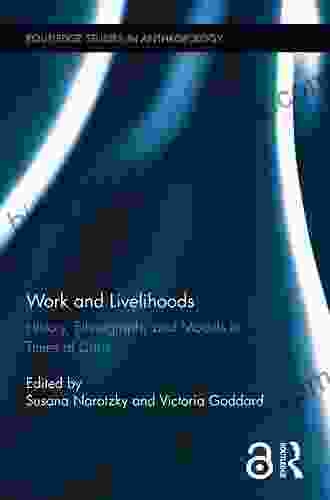
 Elliott CarterHistory, Ethnography, and Models in Times of Crisis: Routledge Studies in...
Elliott CarterHistory, Ethnography, and Models in Times of Crisis: Routledge Studies in...
 Dillon HayesUnlock Your Inner Kitchen Whizz: A Culinary Adventure with Delicious Recipes...
Dillon HayesUnlock Your Inner Kitchen Whizz: A Culinary Adventure with Delicious Recipes... Gordon CoxFollow ·6.2k
Gordon CoxFollow ·6.2k Marcel ProustFollow ·14.1k
Marcel ProustFollow ·14.1k Casey BellFollow ·17.2k
Casey BellFollow ·17.2k Arthur C. ClarkeFollow ·7.8k
Arthur C. ClarkeFollow ·7.8k Brady MitchellFollow ·10.4k
Brady MitchellFollow ·10.4k Clinton ReedFollow ·11.2k
Clinton ReedFollow ·11.2k David Foster WallaceFollow ·8.7k
David Foster WallaceFollow ·8.7k Scott ParkerFollow ·11.5k
Scott ParkerFollow ·11.5k

 Israel Bell
Israel BellEmbark on an Epic 160-Mile Expedition for Charity on the...
Prepare yourself for an...
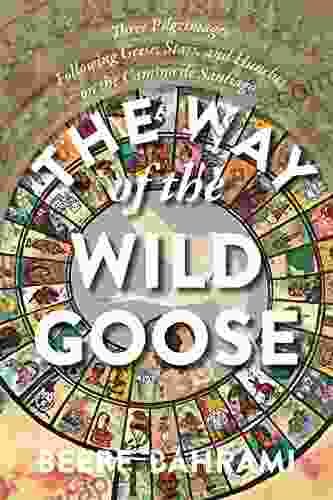
 Josh Carter
Josh CarterThe Way of the Wild Goose: A Journey of Embodied Wisdom...
The Way of the Wild Goose is an ancient...

 Allen Parker
Allen ParkerMastering the Art of Bean Fly Casting: A Comprehensive...
Fly fishing,...

 Aaron Brooks
Aaron BrooksSolving the Homework Problem by Flipping the Learning
What is flipped...

 Fletcher Mitchell
Fletcher MitchellThe Jane Butel Library: A Renewed Source of Knowledge and...
The Jane Butel...
4 out of 5
| Language | : | English |
| File size | : | 39148 KB |
| Text-to-Speech | : | Enabled |
| Screen Reader | : | Supported |
| Enhanced typesetting | : | Enabled |
| Print length | : | 470 pages |
| Lending | : | Enabled |


